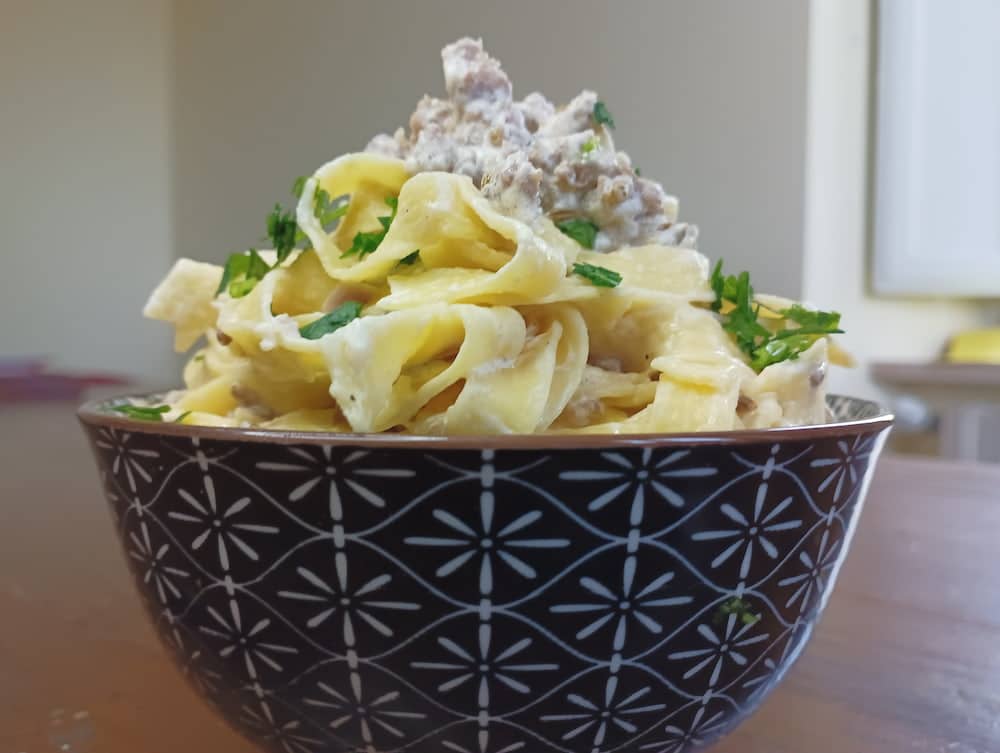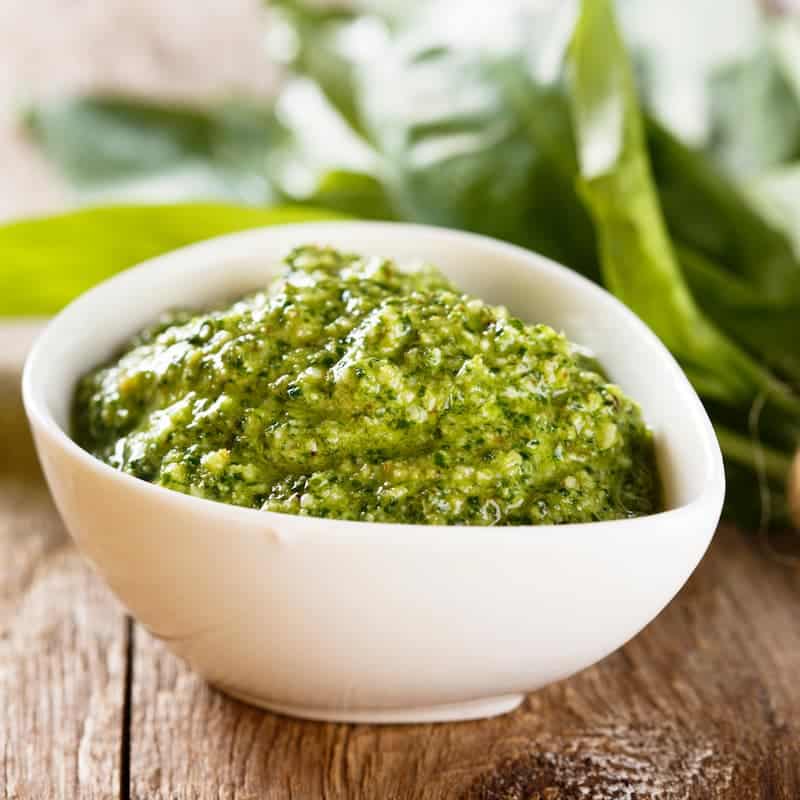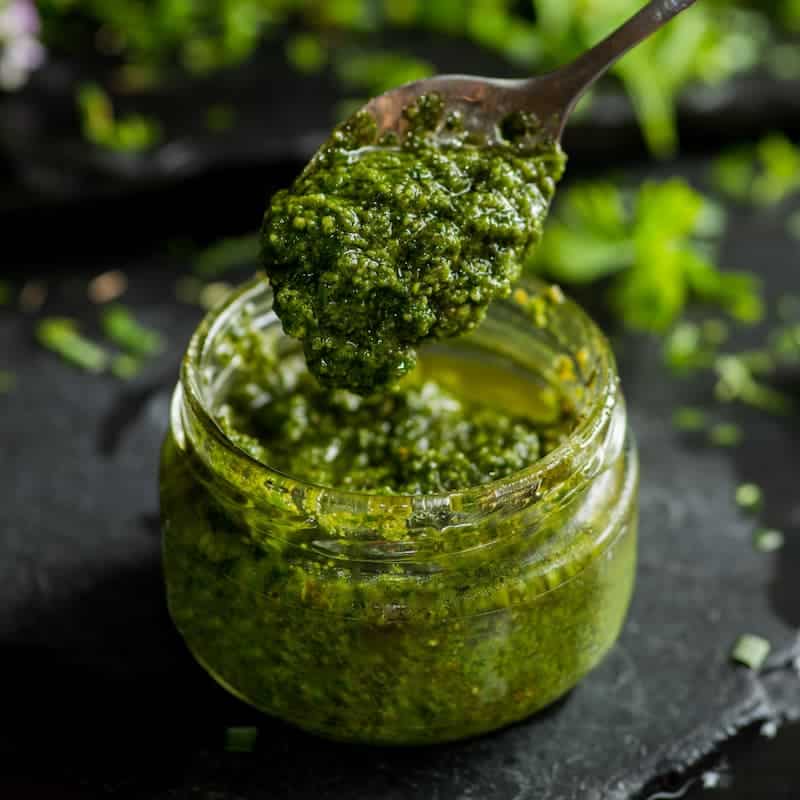Aren’t you tired of weight loss recipes that just put white rice everywhere? I mean, like… rice, really? Yeah, how original! If, like me, you’ve been searching for alternative grains to use in your meals, let’s talk a little bit about farro and barley!
These nutritious and delicious ancient grains have been cultivated and used for thousands of years. In fact, the use of farro in Italy far predates that of rice (yeah, sorry Lombardy, just stating facts here u.u).
They can be easily found at reasonable prices in every grocery store, and are the main ingredient in many different recipes. And yet, I feel we don’t talk about them as much as they deserve!
If you are not familiar with them, in this article I will tell you everything you need to know: what they are, what they taste like, how to store and use them in cooking, and also their nutritional values and health benefits. And at the end, I will also recommend a couple of recipes. 😉
I’ll be honest, nutritionally there is not much difference. In fact, these two grains can be used almost interchangeably. Still, there is a lot to say about each of them. Let’s get started!
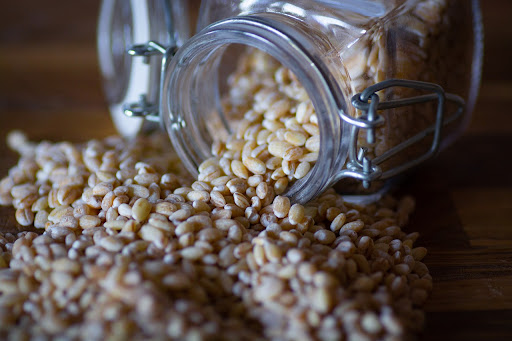
Farro vs Barley: What are they?
Let’s start by saying that farro and barley are both oval-shaped whole grains. Farro is a little larger and thinner, and has a darker color, while barley is a little lighter. When cooked, they remain similar to their raw form, but grow in size.
So, what sets them apart from each other?
As I was saying, there are a few nutritional differences. But what I found really interesting are the different ways they’ve been used around the world through the centuries. Let’s make a brief introduction!
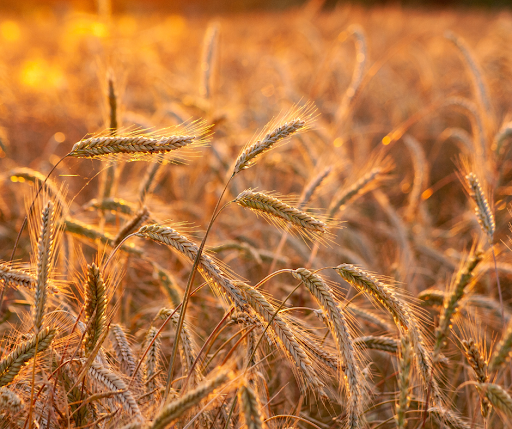
Farro
Farro is a type of whole-grain wheat that originated thousands of years ago in the Fertile Crescent, and then spread in the whole Mediterranean area.
There are actually three types of farro, which are also known as einkorn, emmer wheat, and spelt. The reason why they all have the same name is because the word farro derives from far, which was the generic Latin word for cereals. The word later became associated with just these three similar types of wheat. However, most people now refer just to emmer when using it. Others like to distinguish the three grains respectively as farro piccolo, farro medio, and farro grande.
Farro is high in dietary fiber, protein, and essential amino acids, making it a nutritious grain for anyone looking to improve their health.
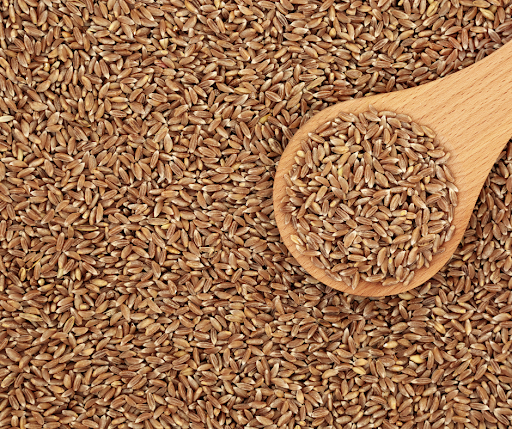
Barley
Barley is also a very ancient grain. It was domesticated around 8000 BCE in the Fertile Crescent, and was later cultivated in Egypt, Mesopotamia, Northwestern Europe, and China.
It was probably the first cereal to be used to make beer. And being adaptable to a wider range of climate than other types of cereal, it was the chief bread plant in much of Europe through the 16th century. The United Irishmen of the Irish Rebellion of 1798 used to always bring some grains with them as provisions for when on the march, so much that barley was later used as a symbol of the Irish resistance to the British. Long story short, there are many stories of how this versatile grain was used throughout human history – maybe too many for this one post.
Nowadays, barley is one of the most produced cereals in the United States. However, about 70% of the global barley production is used as animal fodder.
Like farro, barley is high in dietary fiber and proteins. It is also rich with a lot of B vitamins and beta glucans, a type of soluble fiber linked to heart health and higher levels of HDL cholesterol (the good one). But we’ll talk about it more in detail later.
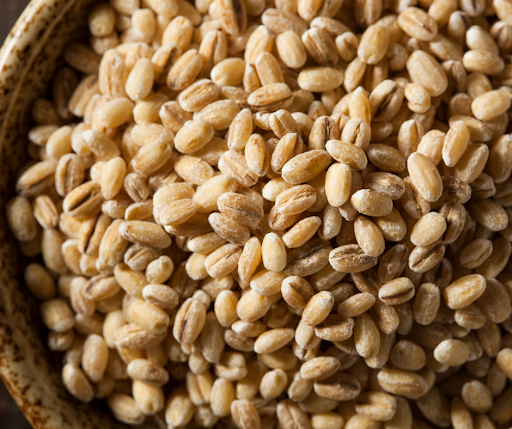
What do they taste like?
Taste-wise, both farro and barley have a nutty flavor and chewy texture. Some say that farro has hints of cinnamon but in all honesty I have never perceived them.
Hulled vs pearled grains
Both farro and barley can be bought in two different forms: hulled (or “whole”) and pearled.
The whole grains are exactly what they sound like. They still have their hull and bran, and they provide a lot of fiber, as well as minerals and vitamins. Pearled farro and barley, on the other hand, have had their hull and bran removed. As a result, they are easier to cook and have a softer texture, but they also lose a lot of their fiber content.
You can think of hulled barley and farro as similar to brown rice, while their pearled versions are processed more like white rice.
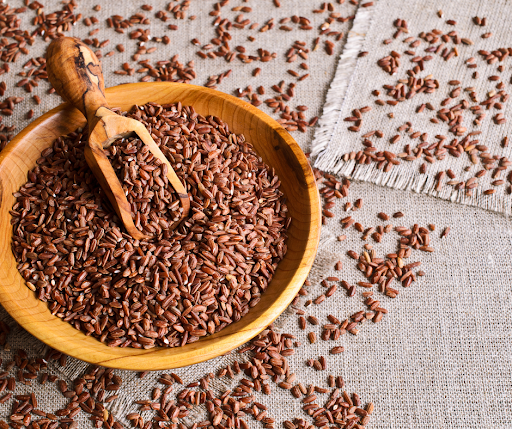
Farro vs Barley: Nutritional Values & Health Benefits
When it comes to comparing farro vs barley, both grains are packed with nutrients.
According to the USDA FoodData Central, 100 grams of farro contain:
- Calories: 362 kcal
- Protein: 12.77 g
- Total fat: 2.13 g
- Carbohydrate: 72.24 g
- Fiber: 10,6 g
- Iron: 1.53 mg
- Magnesium: 128 mg
- Sodium: 0 mg
- Zinc: 4.79 mg
- Niacin: 8.511 mh
- Fatty acids (saturated and trans): 0 g
- Cholesterol: 0 mg
And from the same source, 100 grams of hulled barley have:
- Calories: 354 kcal / 1480 kJ
- Protein: 12.5 g
- Total fat: 2.3 g
- Carbohydrate: 73,5 g
- Fiber: 17,3 g
- Calcium: 33 mg
- Iron: 3.6 mg
- Magnesium: 133 mg
- Phosphorus: 264 mg
- Potassium: 452 mg
- Sodium: 12 mg
- Zinc: 2,77 mg
- Niacin: 4.6 mg
- Cholesterol: 0 mg
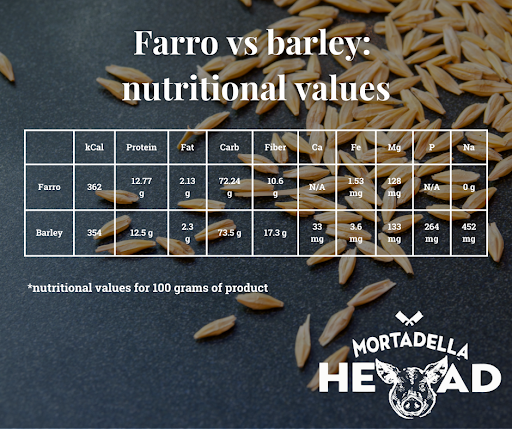
For some reason, many online posts say that farro has more fiber, without citing sources. However, if we look at the data provided by the USDA, it seems that the truth is quite the opposite.
In the end, I don’t think it really matters which one has the higher content. Both are excellent sources of fiber. To understand better, the amount reported per 100 grams of farro is about 40% of the daily value.
These fibers help with weight loss, improve digestion, reduce blood sugar, and over time decrease LDL cholesterol levels (the bad one) and promote increases in HDL cholesterol.
They also help reduce hunger and promote feelings of fullness. For this reason, both farro and barley are often included in low-calorie diets.
But it doesn’t end there.
For example, I have already mentioned that barley is an excellent source of B vitamins and beta glucans. But it is also an excellent source of magnesium, which together with fiber may play a part in reducing the risk of developing type 2 diabetes by lowering blood sugar levels and improving insulin secretion.
In short, if you’re looking for healthy alternatives to white rice or other refined grains, these two are a real gold mine.
And now that you know their differences and benefits, let’s talk a bit about how to use them in the kitchen!
Recipes with Farro and Barley
If you’re looking for some recipe ideas, there are plenty of ways to use farro and barley in the kitchen.
Farro can be used as a main ingredient in salads, soups, or stews. It also makes a great side dish, seasoned with herbs and olive oil. Barley can be used in soups, stews, casseroles, and even desserts.
One popular recipe is barley risotto, which is a healthier version of the traditional rice-based dish. However, I prefer the farro risotto that I’ll show you in a moment.

How to cook farro and barley
In terms of cooking, both farro and barley require a longer cooking time compared to white rice. Prepare yourself to leave them on the stove for about 35 – 40 minutes.
Whole farro takes longer to cook than pearled farro, but it’s worth the effort for its nutritional benefits. Similarly, pearl barley cooks faster than whole barley, but it’s important to note that the former has had some of its bran removed, which also reduces its fiber content.
You don’t need anything special to cook them. You can use your regular rice cooker or pressure cooker, if you want – but a simple pot with a few cups of water will do just fine. Remember to cook them until they are al dente, so they retain their chewy texture! 😉
Now, here are some recipes that you can use to explore the potential of these hearty grains.
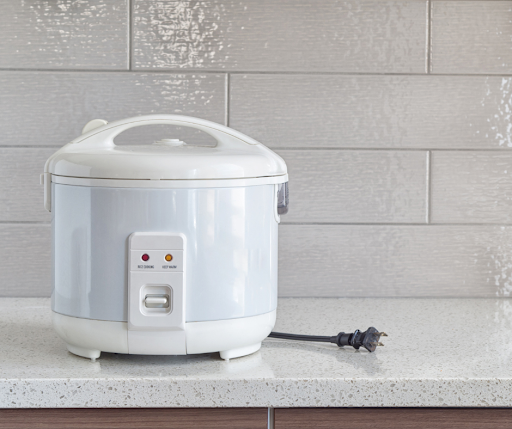
Farro Salad with Roasted Vegetables
This dish is perfect for a light and healthy lunch or dinner. The nutty flavor of the farro pairs perfectly with roasted vegetables like zucchini, bell peppers, and cherry tomatoes. Drizzle the salad with a mixture of olive oil and balsamic vinegar for a tangy and flavorful dressing, and top it off with crumbled feta cheese for an added savory kick.
Cooking process: to make this salad, simply cook the farro according to package directions and roast your vegetables of choice in the oven until they’re tender. Then toss the two together in a large mixing bowl and drizzle with the dressing. Voila! Your delicious and nutritious farro salad is ready to serve.
Of course, this is only one of the many delicious farro salad recipes that you can find online. If you have a favorite one, let me know in the comments!
Farro risotto with pesto and date tomatoes
This is my favorite way of having farro. It’s a creamy and delicious dish that can be served both as an appetizer and a side dish.
Start by cooking the farro the way you would make a risotto. In the meantime wash and cut the date tomatoes in half. When the farro is ready, drain it and add the pesto. Mix well, then add the tomatoes, mix again, and serve.
You can either put it in a large bowl, or serve it in small cups. The restaurant where my sister works usually serves it in small portions, along with potato cream and bacon arranged in fancy ways.
If you care about presentation, this dish looks better with yellow date tomatoes, but it will taste delicious even if you use red ones. I’ve written a full recipe for it. Go check it out!
Farro and Mushroom Risotto
If you’re in the mood for a creamy and comforting dinner, then this farro and mushroom risotto is the perfect choice. The flavor of the farro is balanced beautifully by the earthiness of the mushrooms and the creaminess of Parmesan cheese. This dish is also great for entertaining, as it’s both delicious and impressive.
To make this risotto, saute sliced mushrooms until tender and then add cooked farro and vegetable broth. Cook until the broth is absorbed and the farro is tender, then stir in grated Parmesan cheese for a cheesy and satisfying finish.You can add peas and parsley for extra flavor.
Farro and Kale Soup
This hearty and healthy soup is perfect for a cold winter day. Farro pairs deliciously with kale and the savory flavors of onion and garlic. The vegetable broth makes this soup both flavorful and filling, while the farro adds a great texture.
To make this soup, cook the farro according to package directions and add it to a pot of sauteed onion, garlic, and kale. Pour in vegetable broth and simmer until the kale is tender. Season with salt and pepper to taste and serve with crusty bread for a satisfying meal.
Farro and Roasted Beet Salad
This colorful and flavorful salad is perfect for a summer lunch or dinner. It’s made with farro, roasted beets, vinaigrette, chopped pecans, and crumbled Pecorino. The sweetness of the roasted beets pairs perfectly with farro and the tangy flavors of the vinaigrette. The pecorino cheese adds a creamy and tangy finish to the dish, while the chopped pecans provide a satisfying crunch.
To make this salad, roast beets until tender and toss with cooked farro, chopped pecans, crumbled goat cheese, and a vinaigrette made with olive oil, red wine vinegar, and honey. Serve it cold or at room temperature for a refreshing and delicious meal.
Barley and Vegetable Soup
This hearty and healthy soup is a great way to pack in your daily veggies. The chewy texture of the barley tastes awesome with the tender vegetables and the savory broth. This soup is also great for meal prep, as it keeps well in the fridge and can be easily reheated.
To make this soup, saute diced carrots, celery, and onion until tender, then add cooked barley and vegetable broth. Simmer until the vegetables are tender and the barley is heated through. Then, season with salt and pepper to taste and serve with a slice of crusty bread for a satisfying meal.
Apple Cinnamon Barley Pudding
Now, since I mentioned that barley can be used in desserts too, here’s a link to a recipe I love, written by Sonia from The Healthy Foodie.
With apples, raisins, and cinnamon, it offers a twist on traditional rice pudding. The chewy texture and creamy flavor make for a satisfying and comforting treat. Give it a try and enjoy the delightful flavors!
With this one, I think you have enough recipes to start with. Farro and barley are are very versatile ingredient and can be used in many delicious ways. Explore and make experiments, and then let me know which is your favorite ones!
Now, to end this post, I’ll answer 2 frequently asked questions, and call it a day.
Are Farro and Barley Gluten-Free?
No. If you are following a gluten-free diet or have celiac disease, it’s important to note that barley contains gluten and is not suitable for those with gluten intolerance. Farro is lower in gluten than modern wheat berries, but it still has some.
If you’re looking for gluten-free grains, there are many more suitable alternatives such as quinoa, millet, and amaranth.
How to Store Farro and Barley
Once you open their packaging, you can store both farro and barley in an airtight container in a cool, dry place. They usually have a long shelf life, easily reaching 12 months or more.
Once cooked, they can be kept in the refrigerator for about five to six days.
Conclusion
In conclusion, both farro and barley are ancient grains that offer a range of nutritional benefits and culinary possibilities.
Whether you’re looking to increase your fiber intake, add more plant-based protein to your diet, or simply explore new flavors and textures, these grains are worth considering.
From soups and stews to salads and desserts, there are countless ways to incorporate farro and barley into your meals. Just be sure to follow the recommended cooking and storage tips to get the most out of these wholesome grains.
So why not give them a try and see how they can enhance your culinary repertoire and support your health and well-being?





